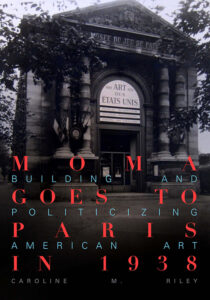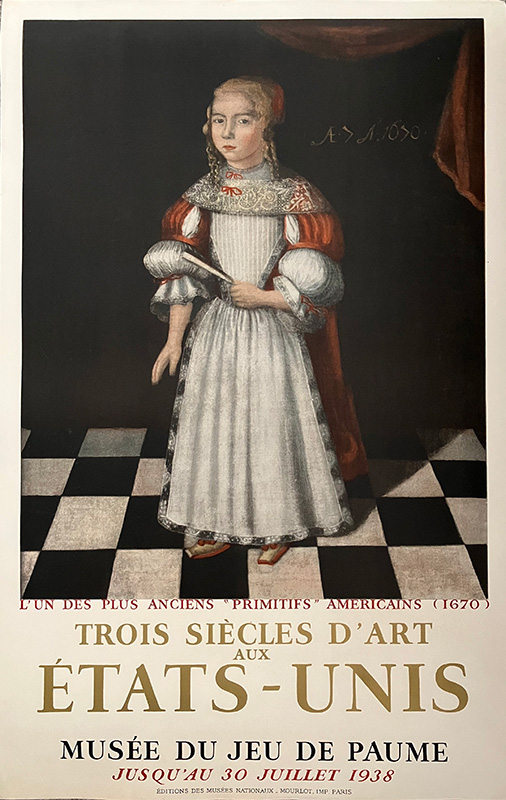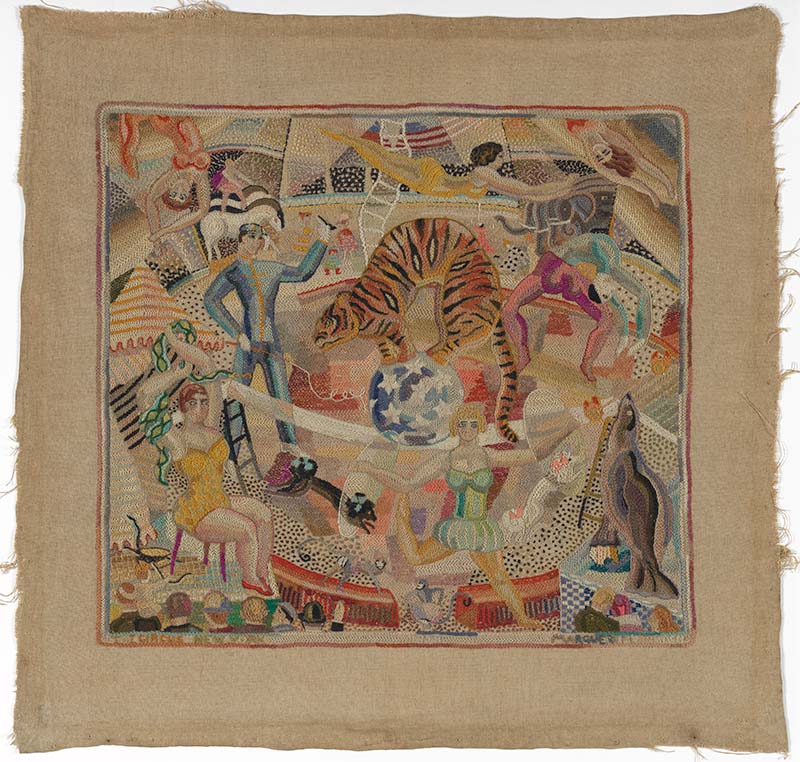MoMA Goes to Paris: New Book about the 1938 ‘Three Centuries of American Art’ Exhibition
by Caroline M. Riley
 The new book MoMA Goes to Paris in 1938: Building and Politicizing American Art (University of California Press, 2023) is the first to explore the Museum of Modern Art (MoMA)’s first international exhibition, Three Centuries of American Art on view at the Musée du Jeu de Paume in Paris in 1938 (figures 1 and 2).
The new book MoMA Goes to Paris in 1938: Building and Politicizing American Art (University of California Press, 2023) is the first to explore the Museum of Modern Art (MoMA)’s first international exhibition, Three Centuries of American Art on view at the Musée du Jeu de Paume in Paris in 1938 (figures 1 and 2).
With over 750 artworks ranging from 17th-century Colonial portraits to 1930s folk art and Mickey Mouse and spanning architecture, film, painting, prints, and sculpture, Three Centuries was the most comprehensive display of American art to date in Europe and a vital contributor to the internationalization of American art. MoMA curators created a visual culture of the United States that diplomats could then employ as evidence of a nation. At the brink of international war in the politically turbulent 1930s, MoMA collaborated with the US Department of State for the first time to deploy works of art as diplomatic agents.
Central to MoMA’s claim that American culture was on view was the implementation of a wide range of materials. In the folk art section, MoMA Director Alfred Barr, Jr. displayed approximately 43 artworks, including paintings, vernacular sculptures, watercolors, mourning pictures, ceramics, metalwork, and textiles, including Marguerite Zorach’s The Circus (figure 3). The curators had discussed the inclusion of decorative arts, specifically glass and silver, in the 1937 version of Three Centuries before contracting the definition of American art to its final formulation. Thus, MoMA’s conception of Modernism under Barr’s guidance contributed to the expansion and democratization of the history of American art by including new materials and subjects, but not necessarily elite or mass-produced utilitarian wares.
Three Centuries elevated folk art at the moment when scholars began solidifying American art history, and its importance appeared in the exhibition’s entry. Doorways on either side of George Washington at Princeton displayed two origin stories (figure 4). If viewers passed through the doorway on the right, they entered the “historical section” with painters such as John Singleton Copley that demonstrated Euro-American relationships. If viewers entered the doorway on the left, they entered the folk art section, labeled “Arts Populaires.” Through this arrangement, MoMA curators demarcated two equally relevant points of origin for American art that were in opposition within academic discourse. American art history was sufficiently embryonic to have two equally valid fountainheads. It was up to the viewers to select their preferred wellspring.
The 1930s provided fertile ground from which American art history, guided by MoMA curators, took a more inclusive turn, with the absorption of new media, genres, subjects, audiences, and aesthetic styles. Curators, journalists, politicians, and art critics all played a role in reimagining American art in Three Centuries, from its inception in 1930 through its display in 1938 as well as in its subsequent reuse in the 1940s and ’50s by MoMA’s Traveling Exhibitions Department and as a prescience for MoMA’s famed International Program. In sum, the exhibition’s dazzling display invites a fundamental question: How did Three Centuries of American Art capture the heterogeneous mix that was American culture in the 1930s and embody it to an international audience grappling with its own political instabilities?
Caroline M. Riley is a Research Associate in the Department of Art and Art History at the University of California, Davis and serves as the NEH Long-Term Fellow at the New York Public Library (2022–2023). Her next book is Thérèse Bonney and the Power of Global Syndicated Photography.
About The Decorative Arts Trust Bulletin
Formerly known as the "blog,” the Bulletin features new research and scholarship, travelogues, book reviews, and museum and gallery exhibitions. The Bulletin complements The Magazine of the Decorative Arts Trust, our biannual members publication.
Click Images to Enlarge
Did you know that clicking on the images in Bulletin posts will allow you to get a closer look? Simply click on an image, and a larger version will open in a pop-up window.











